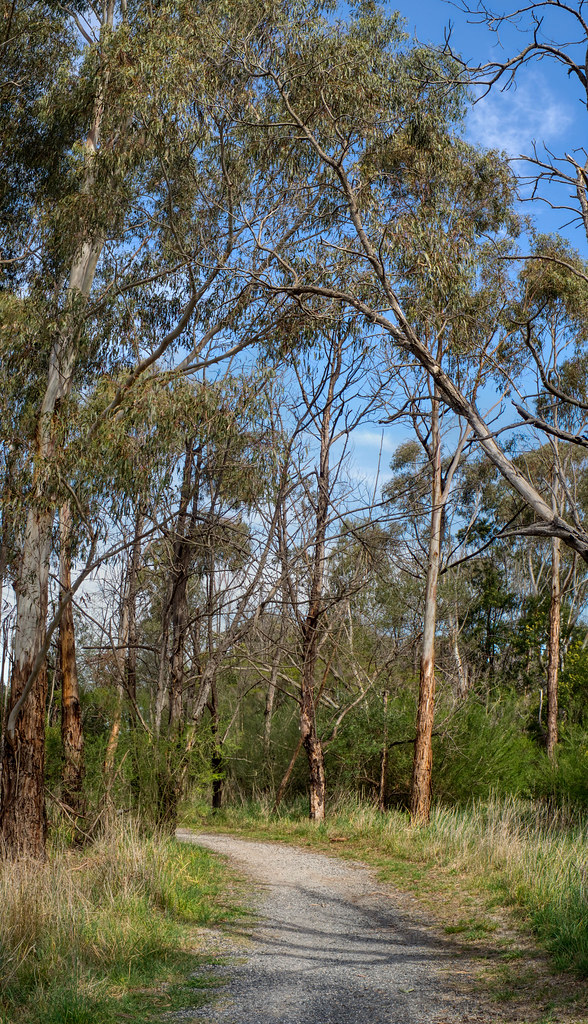Stands of Gum trees can be hard to photograph because they are so tall. Also I was looking for examples of this isssue of showing verticality for my up coming
sketch crawl (in the context of
David Hockney’s observations on photography and seeing for his bigger picture series).
 In front of me on the track I was meandering along (actually doing detailed sketches, like these on the right). I looked up and in the strong Australian afternoon light was typical challenging composition, the understory in shadow, very tall straight trunks, some almost white in full sun others dark in shadow but the canopy just lacy against the deep blue sky. I know a single exposure is a recipe for blown out sky and/or blown out shadows. So I grab my little Olympus switched over to multi-bracketed exposure. I’ve been really pushing hard against Aurora HDR 2019 and hitting it with 5 exposures (-1.3EV, -0.7EV, O.OEV, +0.7EV, +1.3EV), to see if their was notable differences in the image quality (not so noticeable in detail but possibly there is in better colour rendition) Then I did three “compositions” the path and understory the top of the understory and tree trunks and finally up above into the canopy. Rather than holding the camera to a given exposure/ISO regime I left it in automatic so the average exposure could suit the section of image being photographed. So I had 15 exposures (saved in both Jpeg & RAW formats ie 30 files). I used the RAW files in Aurora, to start with higher dynamic range.
In front of me on the track I was meandering along (actually doing detailed sketches, like these on the right). I looked up and in the strong Australian afternoon light was typical challenging composition, the understory in shadow, very tall straight trunks, some almost white in full sun others dark in shadow but the canopy just lacy against the deep blue sky. I know a single exposure is a recipe for blown out sky and/or blown out shadows. So I grab my little Olympus switched over to multi-bracketed exposure. I’ve been really pushing hard against Aurora HDR 2019 and hitting it with 5 exposures (-1.3EV, -0.7EV, O.OEV, +0.7EV, +1.3EV), to see if their was notable differences in the image quality (not so noticeable in detail but possibly there is in better colour rendition) Then I did three “compositions” the path and understory the top of the understory and tree trunks and finally up above into the canopy. Rather than holding the camera to a given exposure/ISO regime I left it in automatic so the average exposure could suit the section of image being photographed. So I had 15 exposures (saved in both Jpeg & RAW formats ie 30 files). I used the RAW files in Aurora, to start with higher dynamic range.















First I ran each set of bracketed exposures through Aurora HDR 2019 and save the default tone mapped image (ie no tonal tweaking or use of “looks” (presets). So far so good. I saved them as as both .tiff (to keep the extra bit depth of colour) and Jpeg (sRGB) to show here.



Finally I assembled the three tiff files using On1 Photo RAW 2018.5. I did a little rotation and cropping and exported the full image (now 4079by7105 pixel) but no other edits now as a final jpeg (back to sRGB). There is great detail in the understory and also a nice blue (not overblown sky). This combination has worked well, below is a link to the image on flickr which is the full resolution (click on it to view in flickr)





















No comments:
Post a Comment